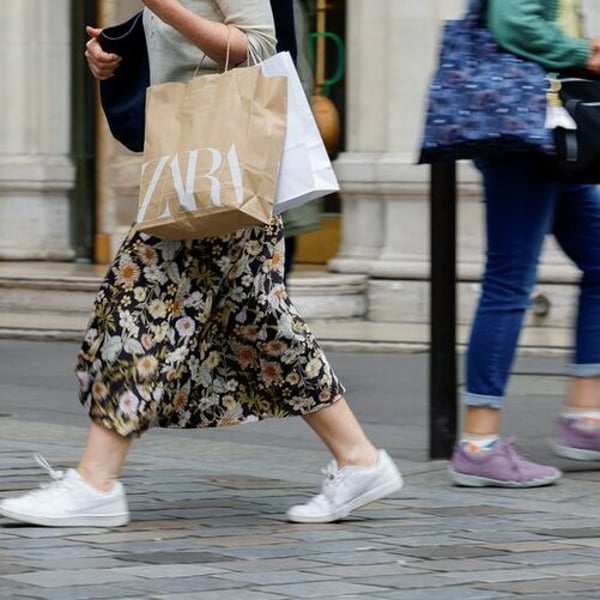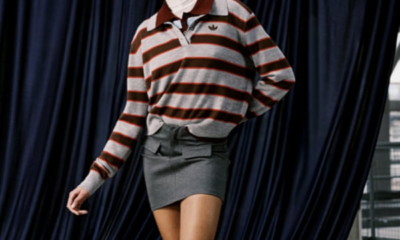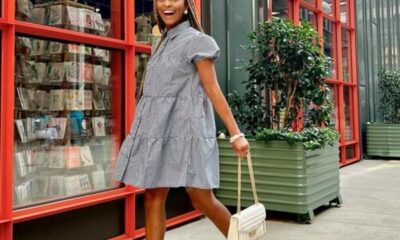Fashion
India’s card payments market set to grow 9.4% in 2025: GlobalData

Published
November 21, 2025
The card payments market in India is set to grow by 9.4% in 2025 to reach Rs 30.1 trillion ($358 billion), fuelled by regulatory developments, improving infrastructure, and evolving consumer preferences, according to GlobalData.
“India’s card payments market is expanding steadily on the back of large-scale financial inclusion programs, regulatory support, and infrastructure-building schemes,” said GlobalData lead banking and payments analyst Ravi Sharma in a release. “The Pradhan Mantri Jan-Dhan Yojana (PMJDY) has significantly raised the banked population, while measures such as reduced merchant fees, the Payments Infrastructure Development Fund (PIDF), and permitting non-banking financial companies to offer banking services are collectively nudging consumers and merchants towards electronic payments.”
India’s higher credit card spending reflects shifting consumer behaviour, beyond the country’s metros and into more rural areas. Debit cards remain the most widely held payment cards in India and represent an entryway into future electronic payments for many non-metro consumers, but credit cards are gaining popularity due to the rewards they offer shoppers. The Reserve Bank of India recently increased ATM fees and this could indirectly promote a shift from cash withdrawals to digital payments for shoppers, according to GlobalData.
“Looking ahead, India’s card payments market will continue to benefit from sustained financial inclusion efforts, ongoing infrastructure investments through schemes like PIDF, and the growing use of cards in ecommerce and transit,” said Sharma. “Although competitive pressure from mobile wallet payments will remain intense, supportive regulation, expanding acceptance networks, and attractive value-added benefits- especially on credit cards and domestic scheme products- will underpin healthy double-digit expansion in transaction value over 2025–29.”
Copyright © 2025 FashionNetwork.com All rights reserved.
Fashion
Chanel reinvents luxury experience at Shanghai’s Plaza 66: FashionNetwork.com exclusive

Published
November 21, 2025
With the addition of a new watches and fine jewellery space, Chanel has made a definitive statement on the future of luxury retail with the significant renovation of its landmark boutique at Shanghai’s Plaza 66. Going beyond a mere refresh, this strategic investment—described by an executive as an essential moment—solidifies the brand’s profound commitment to the Chinese market.
Chanel fashion and Chanel SAS’s president Bruno Pavlovsky, affirmed to FashionNetwork.com in an exclusive interview the location’s importance, calling it “one of the key boutiques that we have in the world.” The primary objective of the renovation is to optimise the client journey, adapting to the post-pandemic trend of clients returning to high-contact physical retail spaces.
The Plaza 66 boutique is positioned as Chanel’s strategic core in China, focusing intently on “offering the best of Chanel.” The location holds unparalleled strategic value, standing as one of Chanel’s most vital global boutiques, consistently ranking as one of the top-performing locations in the country, and situated in one of the most commercially active luxury malls.
Designed by renowned architect and long-time Chanel collaborator Peter Marino, this major renovation is a dynamic expression of Parisian refinement and house codes. The stunning, three-storey space offers a truly luxurious shopping experience, featuring expansive displays of ready-to-wear, bags, and shoes, and introducing a new, exclusive Watches & Fine Jewellery boutique.
The space is meticulously crafted to equally serve the brand’s two core client segments: established top clients and new patrons making a singular purchase. The aim is to ensure all visitors encounter the best service possible, a philosophy signifying the highest degree of sophisticated and meaningful brand engagement.

Chanel employs a differentiated strategy across its three key Shanghai locations—Plaza 66, IFC, and Peninsula—consciously avoiding a standardised approach. While Plaza 66 and IFC function as the primary high-traffic hubs, welcoming the majority of the brand’s clientele, the Peninsula location is positioned as a unique destination boutique. The latter store caters specifically to traveling VICs seeking a more intimate, less conventional experience, described metaphorically as a “little chain” to connect with these clients. The unifying principle across the entire network is the “one boutique is one story” model, which ensures that each location narrates a distinct, city-relevant narrative, reinforcing its role as an experience generator rather than a simple replication.
The brand’s success is anchored in dual strategic pillars: innovation and emotion. Chanel firmly asserts it “never replicates” a boutique; and brings genuine value to the local context rather than engaging in a mere competition for size. “We never replicate,” said Pavlovsky. “Every market is a specific market with a dedicated brief. For each boutique, we sit down with Peter Marino and the team to ensure the design is adequate for that city and its context within the mall. We are not interested in competing to have the biggest boutique. Our focus is purely on what is best for our client—what are their expectations, and what do they want to see from Chanel. What we have achieved in China, through this dedicated approach, is our great fortune and the true centre of our success.”

This focus on bespoke design is also mirrored in the launch of the Chanel & Moi initiative, deemed “key” and “strategic” for cementing future client relationships. This program transforms previously “invisible” after-sales services into “visible” experiences, allowing clients to observe craftspeople and technicians working on their products. By validating the importance of the aftercare moment alongside the purchasing moment, the brand fosters long-term relationships built on trust and consideration, ensuring clients feel “taken into consideration,” beyond the initial sale.
Pavlovsky says, “The Chanel & Moi initiative is extremely important for us and for the House of Chanel. Previously, this essential service was largely invisible. By bringing everything under the Chanel & Moi banner, we aim to make this dedication to service visible to our clients, while simultaneously making our teams proud to deliver it.”
By fostering an environment where clients feel truly “taken into consideration,” this approach is earning deeper trust, allowing clients to feel comfortable raising concerns or discussing product changes. This positive shift is viewed not as an overnight transformation, but as a continuous “journey” that has placed the brand in a significantly better position than it occupied just two years ago, with continuous improvements expected in the coming years.

The brand is confident that its current strategy is moving in the right direction, evidenced by its visible results. Crucially, this positive momentum is heavily amplified by the Chinese market, where the local team is lauded as a “super activator.” This team’s exceptional ability to implement and embody the client-centric strategy ensures that the desired level of customer engagement is being realised efficiently. In summation, Chanel is relying on sustained effort, the strategic visibility of its services, and superior local execution in markets like China to build stronger, deeper client relationships that secure its position for the future.
Chanel maintains an optimistic outlook for the remainder of 2025 and into 2026, driven by its positive business performance. However, according to Pavlovsky, the brand’s formula for sustained success is measured overwhelmingly by client experience and satisfaction. He highlights that offering the best experience makes the sales process a “follower”—meaning revenue naturally tails exceptional service.
Consequently, Chanel’s strategy is focused on consistently delivering superior engagement and products to reinforce the brand’s unique identity in fashion and luxury. Despite facing an economic environment that is “not always easy,” Pavlovsky is confident in the performance of the Chanel teams, making their positive forecast for the future robust.
By Sissi Chu
Copyright © 2025 FashionNetwork.com All rights reserved.
Fashion
Turkiye unemployment steady at 8.5% in Q3 2025

The Household Labour Force Survey revealed the number of unemployed persons aged 15 and over decreased by 26,000 quarter on quarter (QoQ) to 3.01 million persons in Q3 2025.
Turkiye’s seasonally-adjusted unemployment rate was estimated at 8.5 per cent in Q3 2025, displaying no change compared to Q2, official statistics show.
It was estimated at 7 per cent for men and 11.2 per cent for women.
The seasonally-adjusted employment rate was 49 per cent without any change from the previous quarter.
It was 66.2 per cent for men and 32.1 per cent for women.
The seasonally-adjusted employment rate was 49 per cent without any change from the previous quarter. It was 66.2 per cent for men and 32.1 per cent for women.
The number of employed persons in Q3 2025 rose by 65,000 QoQ to 32.558 million.
The number of persons in the labour force increased by 39,000 to 35.568 million in Q3 2025 and the seasonally-adjusted labour force participation rate (LFPR) was 53.5 per cent, with a 0.1-percentage point (pp) decrease. The LFPR Labour was an estimated 71.2 per cent for men and 36.2 per cent for women, a Turkstat release said.
The youth unemployment rate in the country in the 15-24 age group was 15.3 per cent, with a 0.5-pp decrease QoQ. Unemployment rate in this age group was estimated at 11.7 per cent for men and 21.8 per cent for women.
Fibre2Fashion News Desk (DS)
Fashion
ONS says UK retail sales down in October, fashion is weak, but all to play for on Black Friday

Published
November 21, 2025
The weak state of UK retail was shown on Friday by the Office for National Statistics’ figures covering both the three months to October and the latest month’s sales alone.
In the first case the volume of goods bought for the quarter rose 1.1% compared to the previous quarter. Clothing store sales rounded off a strong performance in those three months, peaking in September, with a total rise of 3.1% for the quarter.
But October itself saw sales going into reverse. Volumes are estimated to have fallen by 1.1% in October, the ONS said, following rises in September and August. This was the first monthly fall since May 2025. Supermarkets, clothing, and mail order retailers fell in October, which some retailers attributed to consumers delaying their spending in the lead up to Black Friday. Clothing was down 1.5%.
Analysts blamed a mix of the weather and consumer jitters about the forthcoming Budget, but conceded that clothing in particular is likely to see a spurt linked to Black Friday so maybe October’s drop was just a pause rather than the brakes being applied more permanently.
Jacqui Baker, head of retail at RSM UK and chair of ICAEW’s Retail Group, said: “The positive streak of retail sales growth came to a halt in October, as Budget jitters took hold. Consumers held off from splurging in anticipation of potential tax hikes and hit pause on spending to take advantage of Black Friday deals. The milder weather led to a fall in clothing sales. However, clothing should be one of the main beneficiaries of the annual Black Friday event, so it’s hoped that sales will turn around in November.”
Nicholas Hyett, investment manager at Wealth Club, commented: “The combination of a bleak Budget [ahead] and Black Friday discounts meant consumers reined in spending in October. That should come as no surprise. The government’s ‘will-they, won’t-they’ approach to tax rises is a surefire way to obliterate consumer confidence.”
In fact, GfK’s monthly consumer confidence report out on the same day as the sales figures underlined that point with a fall showing that consumers clearly aren’t happy.
Sagar Shah, associate partner at McKinsey, pointed out that “the golden quarter got off to a sluggish start” but that “retailers still have an opportunity to capture more of the winter spend with personalised and timely Black Friday deals. Brands looking to tackle ad fatigue are turning to non-classical formats, to grab consumer attention, according to our European State of Marketing research. CMOs are planning to expand the immersive experiences they offer (+29 points), publish anti-advertising formats (+22), and offer shoppable content (+17) to drive sales.”
But there was clearly strength in some areas as Deann Evans, Shopify MD EMEA, said the company noted “consumers turning their attention to winter activities. According to our Shopify data, sales of ski and snowboard goggles rose by 131%, while winter wardrobe sales grew too, with cardigans up almost 21% month-on-month”.
Copyright © 2025 FashionNetwork.com All rights reserved.
-

 Tech6 days ago
Tech6 days agoNew carbon capture method uses water and pressure to remove CO₂ from emissions at half current costs
-

 Politics1 week ago
Politics1 week agoBritish-Pakistani honoured for transforming UK halal meat industry
-

 Business6 days ago
Business6 days agoThese 9 Common Money Mistakes Are Eating Your Income
-

 Sports6 days ago
Sports6 days agoTexas A&M officer scolds South Carolina wide receiver after touchdown; department speaks out
-

 Business7 days ago
Business7 days agoWhat’s behind Rachel Reeves’s hokey cokey on income tax rises?
-

 Tech1 week ago
Tech1 week ago$25 Off Exclusive Blue Apron Coupon for November 2025
-

 Sports7 days ago
Sports7 days agoApple scrapping MLS Season Pass service in ’26
-

 Fashion1 week ago
Fashion1 week agoAfter London, Leeds and Newcastle, next stop Glasgow for busy Omnes


















